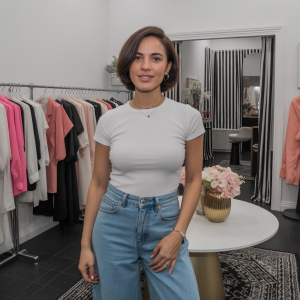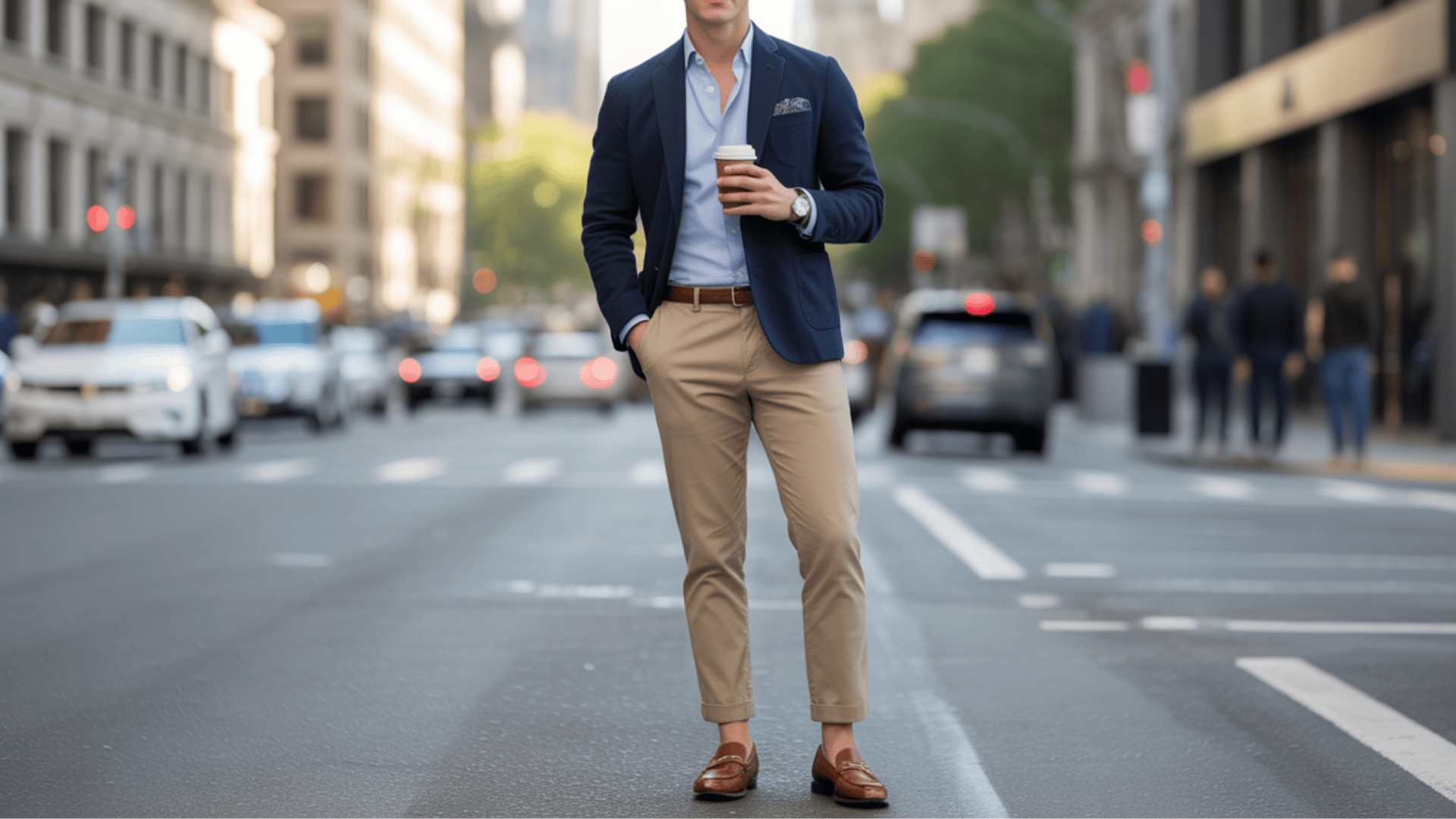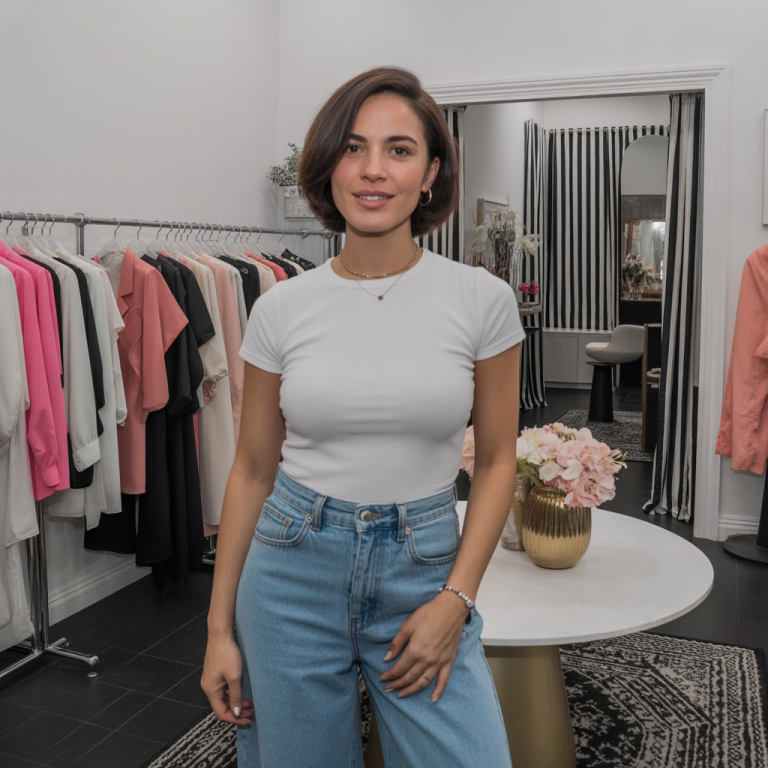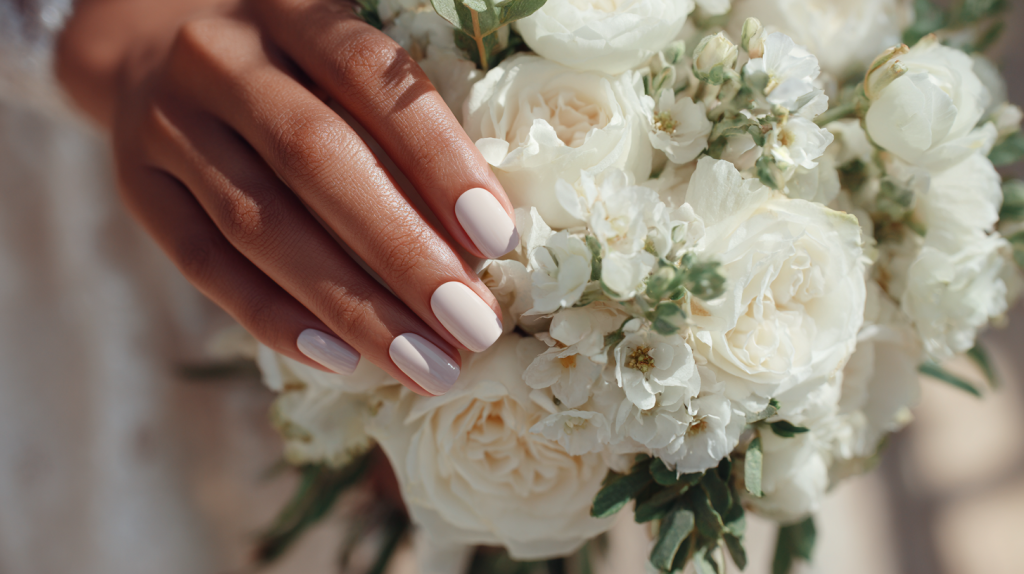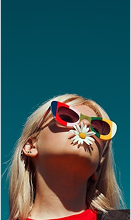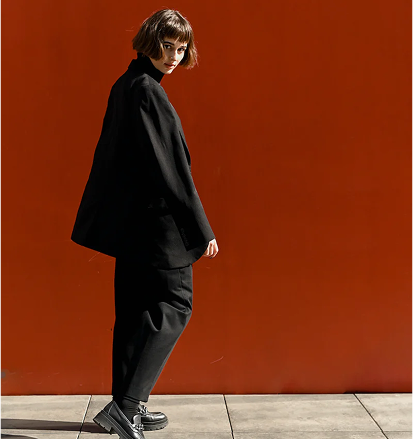Let’s be honest, “smart casual” might be one of the most confusing dress codes out there. You get invited to an event or start a new job, and the dress code says “smart casual.”
So what do you wear? A suit? Jeans? Something in between? If you’ve ever stood in front of your closet feeling completely lost, you’re not alone.
Smart casual sits right in that tricky middle ground between too dressy and too casual. But here’s the good news: once you understand what it means, dressing smart casual is actually pretty simple.
Let’s take a look at exactly what smart casual means for men, clear up the confusion, and give you practical outfit combinations that work every time.
What Is Smart Casual?
Smart casual is the perfect balance between dressy and relaxed. It’s not as formal as a suit and tie, but definitely more polished than a hoodie and jeans.
The phrase itself gives you a clue: “smart” means put-together and neat, while “casual” means comfortable and approachable.
Think of it as taking regular casual clothes and elevating them a notch. Instead of a t-shirt, wear a button-down shirt.
Instead of ripped jeans, choose clean dark jeans or chinos. The key principles are simple: fit matters, quality counts, and neatness is essential. Smart casual has wiggle room, too.
You can dress more formally for fancy restaurants or more relaxed for weekend brunches.
Smart Casual vs Business Casual
Smart Casual: A flexible dress code that balances polished and relaxed. You can mix dressy pieces with casual items, showing personal style while looking neat.
Business Casual: A professional dress code for office settings. More conservative and work-appropriate, leaning toward formal without requiring a full suit.
| Feature | Smart Casual | Business Casual |
|---|---|---|
| Formality | More flexible, creative freedom | Leans professional, conservative |
| Pants | Dark jeans, chinos, dress pants | Chinos, dress slacks (jeans rare) |
| Shirts | Polos, casual button-downs, sweaters | Button-downs, dress shirts |
| Shoes | Loafers, clean sneakers, boots | Dress shoes, leather loafers |
| Accessories | Expressive, patterned | Simple, restrained |
Your takeaway? Business casual says “I’m at work,” while smart casual says “I’m going out and want to look good.”
Smart Casual Staples: The Building Blocks
Let’s get practical. What clothes do you actually need? Think of these as your building blocks—pieces you can mix and match to create different smart casual outfits.
1. Tops / Shirts / Knitwear

Start with an Oxford button-down shirt in light blue or white; it’s your most flexible piece. Look for quality options like the Taylor Stitch The Jack Oxford Shirt.
Add a polo shirt without big logos in solid colors like navy or gray, such as the Rag & Bone Standard Issue Polo.
Include casual button-downs in chambray or flannel for texture, and try J.Crew’s Slim-fit Chambray Shirt for a reliable option.
Finish with a simple crew-neck or V-neck sweater in merino wool or cotton. The Uniqlo Merino Blend Crew is an affordable and versatile layering piece.
2. Bottoms / Trousers

Chinos are your smart casual best friend in navy, khaki, olive, and gray. For everyday wear, try J.Crew’s 484 Slim-fit Chino.
Dark wash jeans without rips or fading work perfectly, and Levi’s 511 Slim Fit Jeans.
When you need to lean more “smart” than “casual,” go for tailored trousers in wool or blended fabric like Banana Republic’s Italian Wool-Blend Trousers.
Make sure everything fits well at the waist and breaks slightly at your shoes, as a small alteration goes a long way.
3. Outerwear / Layers / Jackets
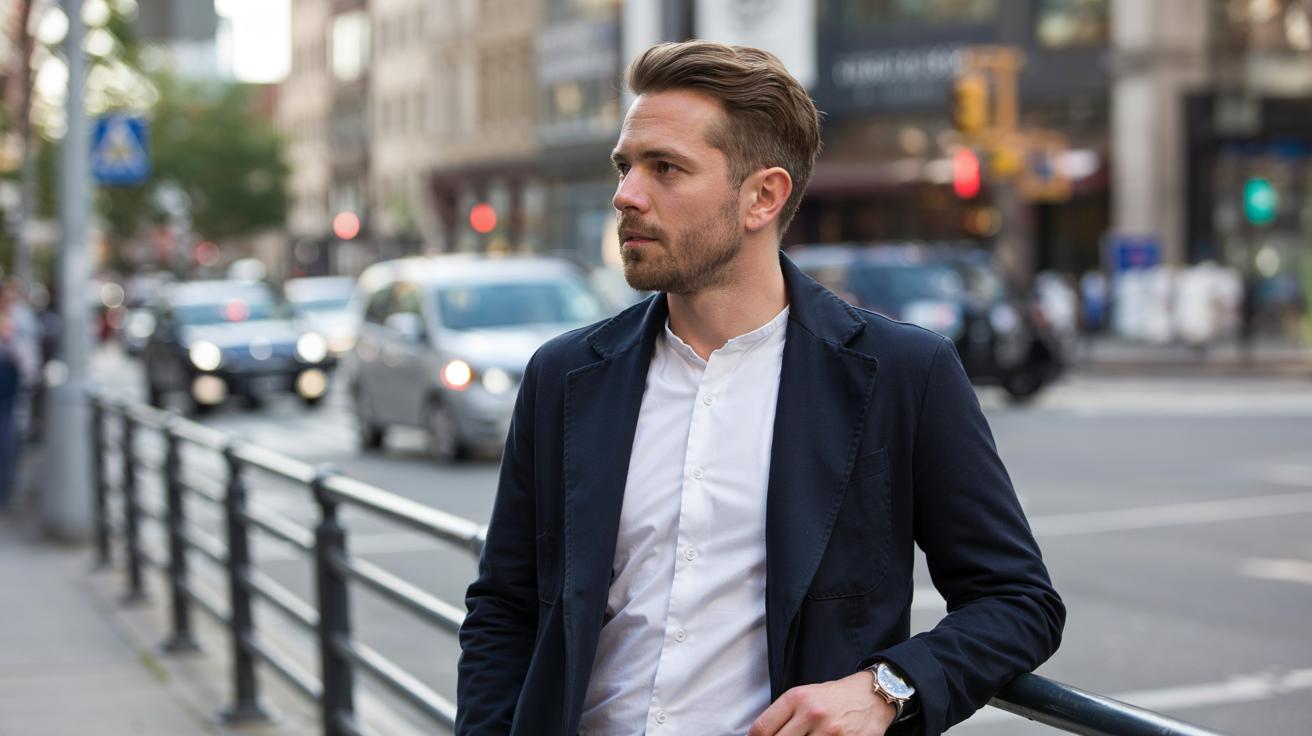
An unstructured blazer in navy or gray instantly makes any outfit look polished.
Try J.Crew’s Unstructured Wool Blazer for that perfect mix of structure and comfort.
For a slightly more relaxed feel, a lightweight bomber jacket like The Theory Regal Bomber adds clean lines without being too formal.
For transitional seasons, overshirts or shackets like Taylor Stitch’s Ojai Shirt Jacket layer easily over shirts and sweaters for a laid-back smart casual look.
4. Footwear

Footwear completes the outfit, so choose wisely. Leather loafers in brown or tan are easy to slip on and dressy enough for most occasions.
The Allen Edmonds Randolph Penny Loafer is a classic pick.
For something more structured, brogues, derbies, or monk straps from Cole Haan deliver more all-around function.
When temperatures drop, Chelsea boots or chukka boots like the Thursday Boot Co. Captain add polish and personality to your fall lineup.
5. Accessories & Details
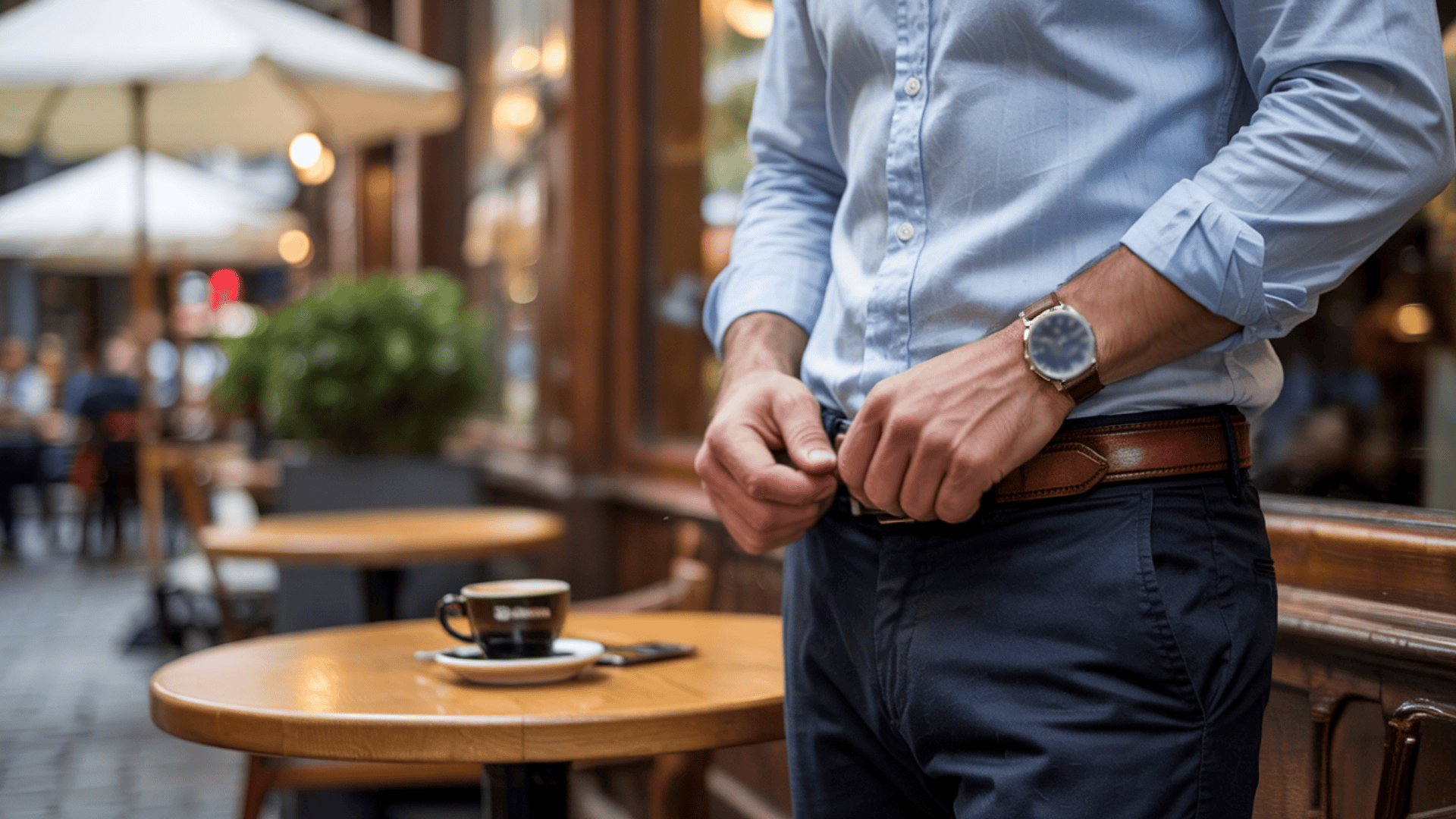
Accessories are what take a look from good to intentional. Match your leather belt to your shoes; for quality, Allen Edmonds’ Cyrus Avenue Belt is a safe bet.
A classic watch, such as the Timex Marlin Automatic, adds subtle class without shouting for attention.
Choose dress socks in muted tones or small patterns, and brands like Bombas or Gold Toe deliver comfort and style.
Do not forget the details: clean shoes, neat grooming, and trimmed nails. These finishing touches define smart casual as much as your clothes do.
Foolproof Smart Casual Outfits
Sometimes it’s easier to see what works than to build it from scratch. Here are three complete outfits that nail smart casual.
Outfit 1: Office-Ready Smart Casual
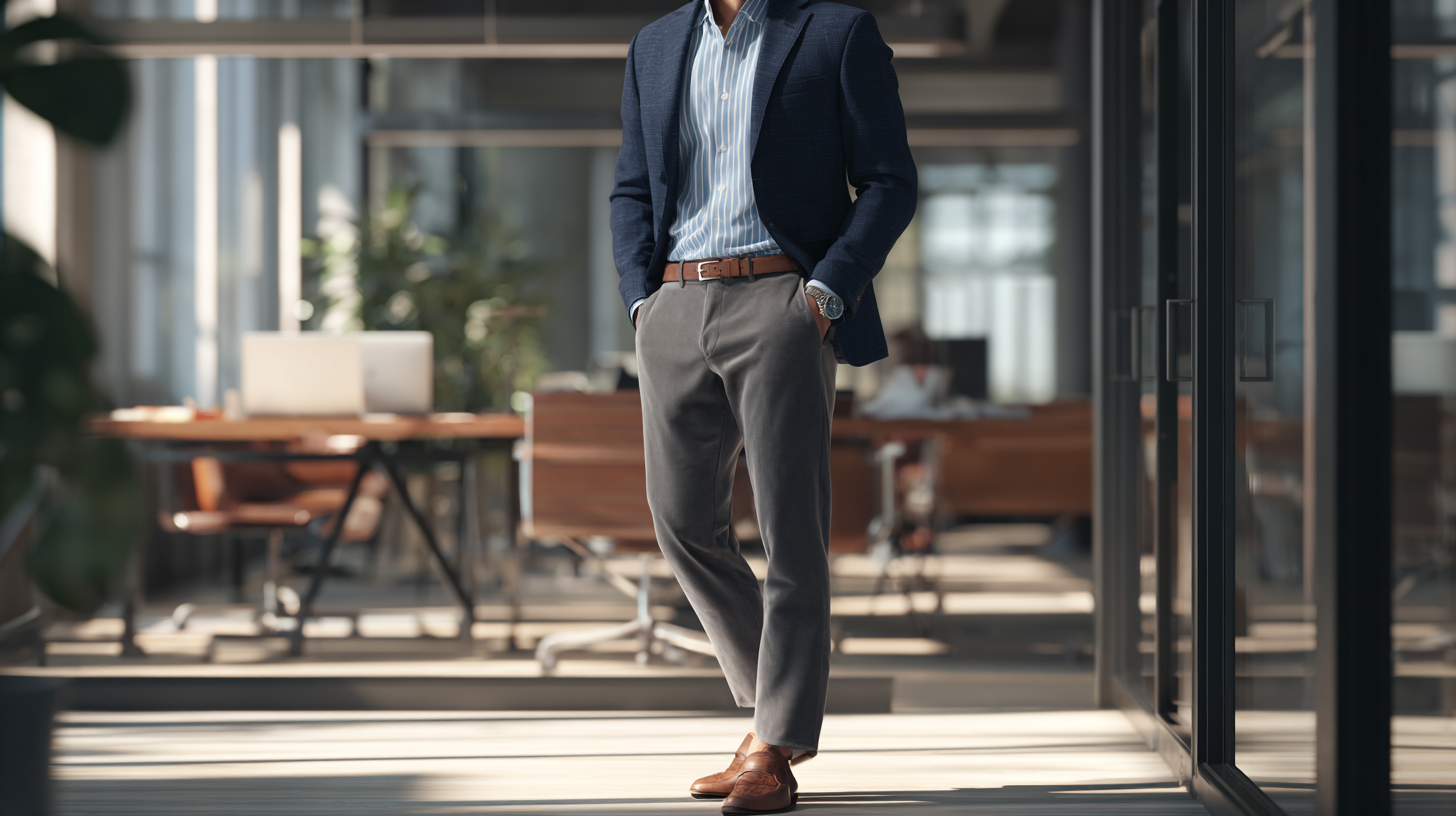
This works for a casual office, a daytime meeting, or lunch with colleagues. Wear a navy unstructured blazer, light blue Oxford shirt, charcoal or khaki chinos, and brown leather loafers.
Add a brown leather belt and a simple watch.
Why it works: The blazer adds structure and polish. The light blue shirt is clean and classic. Chinos keep things comfortable but neat. You look professional without looking stuffy.
Outfit 2: Weekend Dinner / Date Night

Perfect for a date night, dinner with friends, or any evening event that’s not super formal.
Try a white or charcoal polo shirt with no logos, slim dark jeans with no distressing, suede Chelsea boots, and a wool or tweed sport jacket. Skip the jacket in warmer weather.
Why it works: Dark jeans keep things casual but refined. The polo is comfortable and neat. Adding a sport coat makes you look intentional and stylish.
Outfit 3: Layered Transitional Look
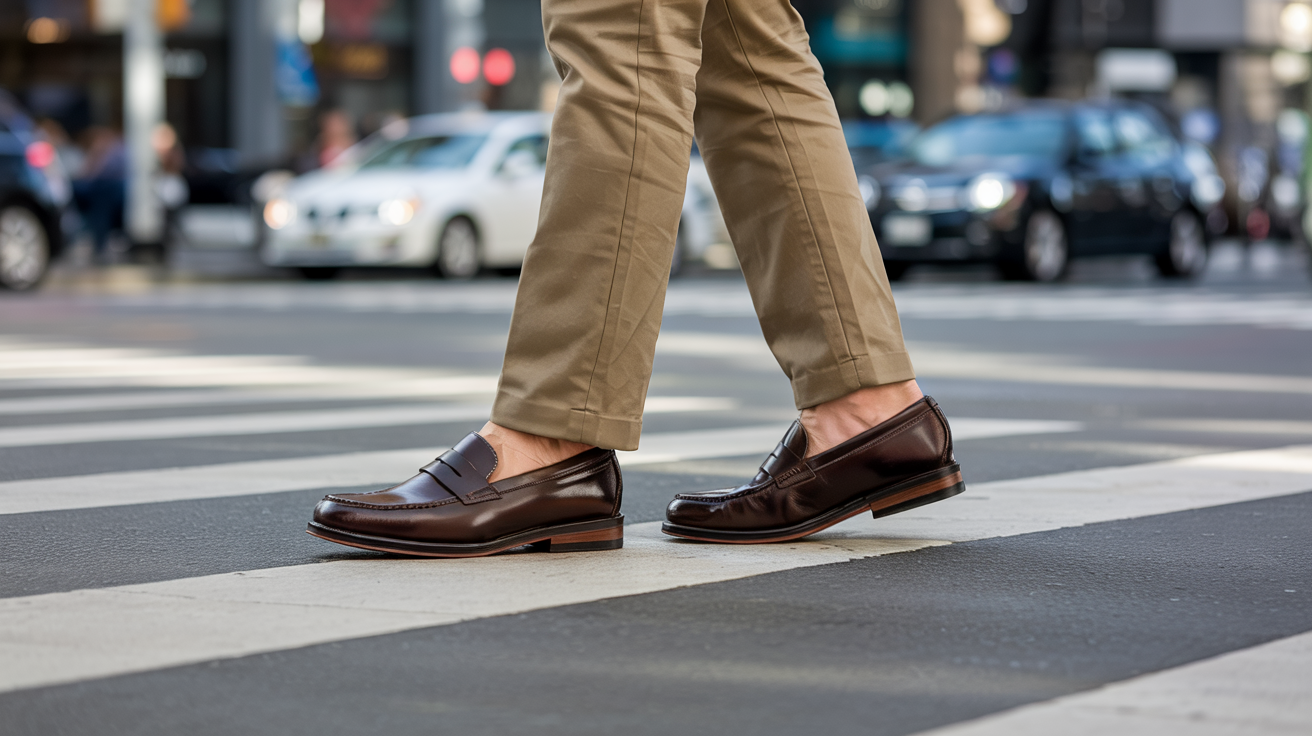
Great for weekend outings or casual meet-ups. Wear a fine-gauge crew-neck sweater in a neutral color, a white button-down shirt underneath with the collar peeking out, olive chinos or tailored trousers, and minimalist leather sneakers or derbies. Add a watch and a leather belt.
Why it works: Layering a sweater over a collared shirt looks effortlessly stylish. It shows you put thought into your outfit without trying too hard. The combination feels cozy but polished.
Smart Casual Styling Tips
Now let’s talk about the little things that separate a good outfit from a great one. These styling tips will help you look polished and intentional every time.
- Start simple, then upgrade: Begin with a basic casual outfit, then make one or two smart swaps. Change your t-shirt to a button-down or swap sneakers for loafers.
- Get the fit right: A perfectly fitted, affordable shirt beats an expensive one that doesn’t fit. Have your pants and shirts tailored if needed. It’s worth the investment.
- Mix textures for interest: Pair a textured sweater with smooth chinos, or a chambray shirt with wool pants. Mixing textures makes your outfit look more thoughtful and polished.
- Keep colors simple: Stick to two or three colors per outfit for a clean, cohesive look. Example: navy chinos, white shirt, brown shoes work every time.
- When in doubt, dress up: It’s always better to be slightly overdressed than underdressed. You can always remove a blazer, but you can’t add one if you didn’t bring it.
Common Mistakes & What to Avoid
Even with the best intentions, it’s easy to make smart casual mistakes. Here’s what not to do.
Don’t wear clothes that are too big or too small. Baggy clothes make you look sloppy. Clothes that are too tight make you look uncomfortable. Get the fit right.
No athletic shoes, except in rare cases. Your running shoes are for the gym, not for smart casual. If you want to wear sneakers, make sure they’re clean, minimalist, and leather.
Don’t mix too many bold pieces. If you’re wearing patterned pants, keep your shirt simple. Too much is going on, and it looks chaotic.
Avoid super bright or clashing colors. Stick to colors that complement each other.
Never skip the details. Scuffed shoes, wrinkled shirts, or forgetting a belt can ruin an otherwise great outfit.
Conclusion
Smart casual doesn’t have to be complicated. It’s about looking neat, polished, and comfortable all at the same time.
Remember that smart casual balances dressy and relaxed, fit matters as much as the clothes themselves, and you should build your wardrobe around versatile basics like chinos, button-downs, and quality shoes.
Start with the three outfit ideas we shared and experiment by swapping one piece at a time. The more you practice, the more natural it becomes.
Once you nail smart casual, you’ll have a style that works for any situation. What’s your go-to smart casual outfit? Drop a comment below!

